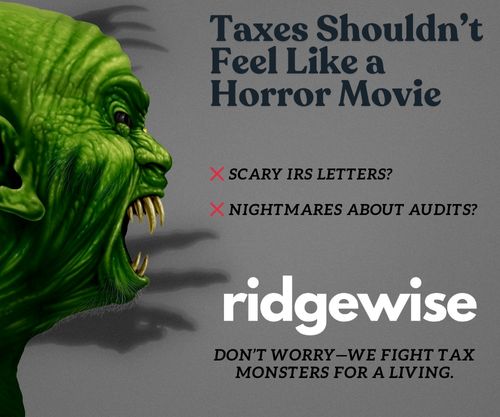Understanding fixed costs is crucial for any business. Studies show that nearly 70% of small businesses fail due to poor financial management. Fixed costs, which remain constant regardless of production levels, play a significant role in determining your overall profitability. Knowing how to identify and calculate these costs can help you make informed decisions and strategize effectively.
Ridgewise Accounting specializes in helping businesses like yours pinpoint fixed costs and manage their finances with precision. While other firms may offer generic solutions, Ridgewise tailors its services to meet your specific needs, ensuring you stay ahead in a competitive market. With our expertise, you can confidently navigate your financial landscape and focus on growth.
Accurate financial insights are essential for success, and understanding fixed costs is a key part of that equation.
Understanding Fixed Costs
Fixed costs are vital to comprehend for assessing business performance. They remain constant, irrespective of production volume, influencing overall profitability. Recognizing fixed costs aids in effective budgeting and forecasting.
Definition of Fixed Costs
Fixed costs refer to expenses that do not change with the level of goods or services produced. Common examples include rent, salaries, and insurance premiums. Understanding these costs helps in determining the break-even point for a business, where total revenues equal total expenses.
Examples of Fixed Costs
Examples of fixed costs encompass various business expenditures. Some common types include:
- Rent or Lease Payments: Payments for property don’t fluctuate based on output.
- Salaries: Employee wages for full-time staff remain stable, regardless of hours worked.
- Insurance: Premiums for insurance policies are consistent over the payment period.
- Depreciation: The allocated cost of fixed assets, such as machinery, persists over time.
- Utilities: Basic utility costs for services like electricity may stay constant with baseline usage.
Ridgewise helps businesses identify and manage fixed costs accurately. By providing specialized bookkeeping services, Ridgewise offers insights and clarity, allowing you to focus on growth while maintaining control over expenses.
Key Methods for Calculating Fixed Costs
Understanding how to calculate fixed costs helps you manage your business finances effectively. Here are two primary methods for determining these essential expenses.
Method 1: Using Total Costs
Total costs represent the sum of fixed and variable costs in business operations. To find fixed costs using this method, subtract variable costs from total costs. This calculation reveals consistent expenses that do not fluctuate with production levels. For example, if your total costs amount to $50,000 and variable costs are $30,000, your fixed costs equal $20,000. Keeping track of these figures aids in accurate budgeting and financial planning. Ridgewise provides bookkeeping services to assist in maintaining precise records and calculations, enabling you to focus on strategic growth.
Method 2: Break-even Analysis
Break-even analysis assesses the point where total revenues equal total expenses. This analysis helps you ascertain fixed costs by determining how many units need to be sold to cover both fixed and variable expenses. To use this method, calculate your break-even point in units by dividing total fixed costs by the price per unit minus variable cost per unit. For instance, if your total fixed costs are $40,000, the price per unit is $100, and variable costs are $60, the break-even point is 1,000 units. Knowing your break-even point assists in setting sales targets and understanding your cost structure. Ridgewise’s tailored support helps simplify this process, offering detailed reports and insights for better decision-making in your business.
Steps to Find Fixed Costs
Finding fixed costs involves a systematic approach to ensure accurate calculations. Follow these key steps to identify fixed costs effectively.
Step 1: Identify Total Costs
Begin by determining the total costs associated with your business operations. Total costs include all expenses incurred, encompassing both fixed and variable costs. For example, if your total costs amount to $50,000, this figure provides a baseline for further calculations. Accurate record-keeping of all expenditures, such as rent, utilities, salaries, and materials, helps ensure that no costs are overlooked. Ridgewise offers dependable bookkeeping services to assist in accurately tracking these expenses, enhancing your ability to assess total costs.
Step 2: Separate Variable Costs
Separate variable costs from total costs to isolate fixed costs accurately. Variable costs change based on production levels, including items like raw materials, packaging, and direct labor costs. For instance, if variable costs are $30,000, subtract this amount from your total costs. In our earlier example, subtracting $30,000 from $50,000 results in fixed costs of $20,000. Maintaining distinct categories for variable and fixed costs simplifies this process. Ridgewise’s expertise in accounting ensures that you categorize expenses correctly, enabling a clearer understanding of your financial landscape.
Tools and Resources
Several tools and resources simplify the process of finding fixed costs, aiding businesses in effective financial planning and management. By using the right software and templates, you can streamline your cost analysis.
Financial Software
Financial software plays a crucial role in tracking fixed and variable costs. Programs like QuickBooks, Xero, and FreshBooks provide easy access to detailed financial reports. These platforms allow you to categorize expenses clearly, ensuring fixed costs are identified correctly. By integrating your accounting processes, you maintain up-to-date records that reveal your business’s financial health.
Ridgewise complements these programs with dedicated bookkeeping services. Our team ensures all entries are accurate, helping you gain a clear understanding of your fixed costs and overall financial position.
Cost Analysis Templates
Cost analysis templates offer structured formats for calculating fixed costs. These templates often include sections for total costs, variable costs, and a breakdown of fixed expenses. Using Excel or Google Sheets, you can customize templates to suit your business’s specific needs, providing clarity on your expenditures.
Ridgewise provides assistance in creating and maintaining these templates. Our expertise ensures you utilize them effectively for comprehensive cost analysis, leading to informed financial decisions.
Key Takeaways
- Understanding Fixed Costs is Essential: Grasping how fixed costs impact business operations is crucial for effective financial management and profitability.
- Definition and Examples: Fixed costs remain constant regardless of production levels, including expenses such as rent, salaries, insurance, and depreciation.
- Calculation Methods: Fixed costs can be determined through methods like subtracting variable costs from total costs or conducting break-even analysis to assess financial health.
- Systematic Steps for Identification: To find fixed costs, identify total costs, separate variable costs, and accurately record all expenditures to ensure precision in your calculations.
- Utilization of Tools: Leverage financial software and cost analysis templates to streamline the identification and management of fixed costs, enhancing financial planning.
- Tailored Support from Ridgewise: Engage specialized accounting services like Ridgewise to gain clarity on your fixed costs, optimize financial insights, and support strategic business growth.
Conclusion
Understanding fixed costs is essential for your business’s financial health. By accurately identifying and managing these expenses, you can make informed decisions that drive growth and profitability. Utilizing tools like financial software and cost analysis templates can simplify this process, ensuring you maintain control over your budget.
With the right support from experts like Ridgewise Accounting, you can navigate the complexities of fixed costs with confidence. This knowledge not only helps you reach your break-even point but also positions your business for long-term success. Prioritize understanding your fixed costs and watch your business thrive.
Frequently Asked Questions
What are fixed costs?
Fixed costs are expenses that remain constant regardless of production levels. They include rent, salaries, insurance, depreciation, and certain utility bills. Understanding fixed costs is essential for determining a business’s profitability and break-even point.
Why are fixed costs important for businesses?
Fixed costs are crucial for budgeting and forecasting in businesses. They help determine the break-even point, where total revenues equal total expenses. Understanding these costs is vital for making informed financial decisions and fostering growth.
How can businesses calculate fixed costs?
Businesses can calculate fixed costs by identifying total costs and subtracting variable costs. Another method is break-even analysis, which determines the number of units needed to cover all expenses. Accurate calculations help in effective financial management.
What steps should a business take to find fixed costs?
To find fixed costs, a business should first identify total costs, then separate variable costs from total costs. Maintaining clear records and distinct categories for each type of cost is essential for accurate identification and management.
What tools can assist in managing fixed costs?
Financial software like QuickBooks, Xero, and FreshBooks can help track and categorize fixed and variable costs. Additionally, cost analysis templates can be customized in Excel or Google Sheets. Ridgewise Accounting also offers bookkeeping services to support this process.




